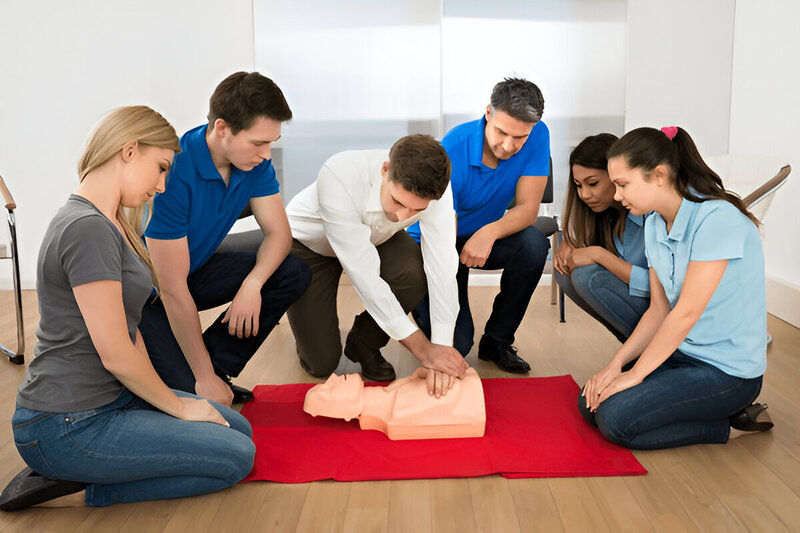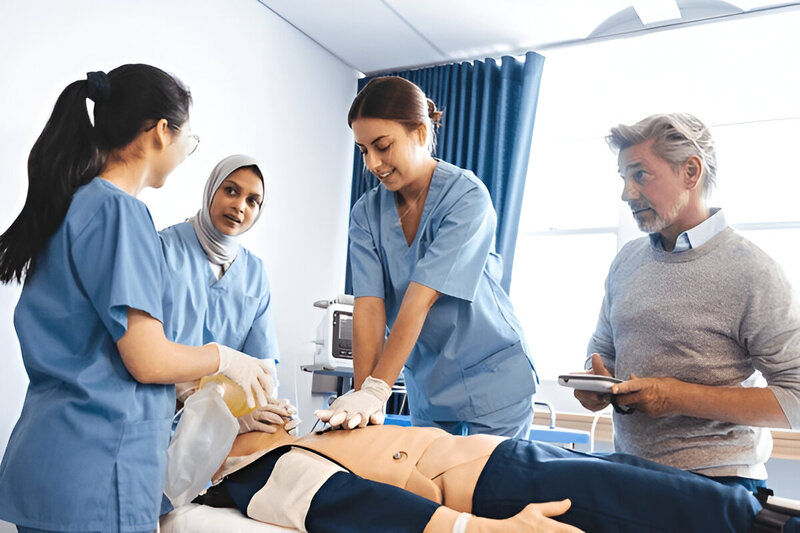Innovative CPR Training Brisbane Methods You Should Know About
- Lara Buck
- Aug 27, 2025
- 5 min read

The most recent developments in CPR training and instruction delivery methods have evolved to save more lives. A new and innovative approach to CPR training in Brisbane gives an edge to those planning to be life savers in Queensland. These methods enhance knowledge retention and also bestow practical CPR application during emergencies. In this article, we discuss what innovations are being introduced in Brisbane to put together a world-class CPR training program, why this is important, and how it enables a greater number of people to respond confidently when the time calls.
Importance of Innovation in CPR Training Brisbane
The relevance of CPR training is not merely in the theory imparted but CPR is action carried out on impulse when the pressure is on. Many of the earlier CPR trainings relied heavily on lectures or mannequin demonstrations, somewhat limiting their application to real-life situations. It is quite indicative as to how the CPR training Brisbane innovations are now making learning more interactive, realistic, and free-flowing.
Engineered CPR training is now considered a necessity for increasing the chance of survival during the critical windows of a cardiac emergency. Early high-quality CPR delivery generally doubles or triples odds of survival. Innovations aim to address hesitations, anxieties, and errors that stem from brutal realities.
Key reasons innovative CPR training in Brisbane matters:
Immersive experiences are key to skill retention.
Scenario-based practice cultivates confidence as learners.
Speeds up reaction in artificial real-life emergencies.
Enables interactive access to different learning communities.
Technology integration for real-time feedback and progress tracking.
These developments have prepared many more people in Brisbane for lifesaving interventions, thus contributing greatly to better community health outcomes.
Emerging Technologies Changing CPR Training Brisbane
The technology is the major force in transforming CPR training Brisbane, thus providing these highly engaging and effective learning experiences. They are all about real-time feedback and adaptive learning methodologies devised to maximize CPR skills application and standard.
Notable technologies in innovative CPR training Brisbane methods:
Real Time Feed Back Mannequins: Today's mannequins read the depth of compression, rate of compression, and quality & quantity of ventilation with sensors. Instant feedback on technique lets learners correct their mistakes and perform better.
VR Simulations: This technology simulates training in some realistic circumstances where the student can learn the CPR techniques under pressure similar to that in an actual emergency.
Augmented Reality (AR)-Supported Learning: AR is used to overlay guiding instructions onto the user's view of the steps involved in CPR administration via smart glasses or other installations to provide hands-free step-by-step instructions and visual pointers to the learner.
Mobile CPR Training Applications: The interactive quizzes and video tutorials, along with the info refreshers, working away from the hands-on training, comprehensive supplements the learning experience of this hands-on engagement.
AED Integration: The new training program utilizes AED simulator devices, teaching learners how to combine CPR with the use of defibrillators for a truly effective response to emergencies.
This is how CPR is being transformed from a dry course into an awesomely lifelike, dynamic learning experience.
Hands-On and Scenario-Based Learning in CPR Training Brisbane

The scenario-based learning approach is gaining momentum in CPR training in Brisbane today. In this model, learners are expected to apply assessment skills, decision-making, and actions very similar to those encountered in a real emergency. Scenario-based learning further provides the following benefits to CPR training in Brisbane:
Applies realistic pressure thus developing confidence;
Encourages teamwork and communication development;
Helps the development of muscle memory for effective CPR performance;
Facilitates practicing different emergency situations like drowning or choking;
Provides the prospect for reflective learning and error-based improvement.
CPR training classes are beginning to feature many hours of realistic role play, during which participants are cast as responders while instructors create emergency environments through sounds, timing challenges, and multiple victims. This teaching technique prepares people for the complex uncertainties faced in actual emergencies.
Flexible and Accessible CPR Training Brisbane Formats
Modern CPR training techniques adapt as well to the demands of today in offering new formats that will fit in busy schedules or different learning methods.
Flexible CPR training transforms such methods into:
Blended Learning: Online theoretical modules are combined with shorter "in-person" practical sessions at the ends of these modules. This hybrid model time, saving that all-important hands-on skill development is assured.
Microlearning Modules: Segments of short, focused learning units delivered digitally allow learners to update and refresh their key learnings in CPR on the move.
Group Onsite Training: Companies or community groups can organize tailored onsite sessions at workplaces or venues, increasing the safety culture within teams.
Flexible Public Workshops: These offer different time slots; weekend classes, and condensed courses which remove any barriers to access.
Such innovative delivery methods will ensure that CPR training will reach many residents of Brisbane without interfering with their daily routines.
The Role of Continuous Improvement and Recertification in CPR Training Brisbane
Once the skill of CPR is learned, if not practiced, it fades away; therefore, maintaining competency is of great importance. The new methods of CPR training Brisbane encourage the ongoing development of skills after completion of the initial course. Some of the main areas of development are:
Recertification: Refresher and latest guidance-reviewed courses enable learners to not only be up to speed but also to feel confident.
Tools to Retain Skills: Interactive applications and reminders invite practice and knowledge for refreshment.
Refresher Workshops: These are ideal training sessions which will ensure powerfully performed chest compressions and use of AED.
Feedback-Based Performance Tracking: technology-enabled mannequins and software that track skill progression and identification of areas to improve.
These continuous improvement efforts maximize the realistic aspects of CPR training Brisbane by empowering participants to effectively respond dovetail when needed.
Conclusion
A very rapid and interesting change is taking place in the scope of CPR training in Brisbane, with very exciting innovations aimed at making the learning even more effective, accessible, and realistic. From mannequins providing real-time feedback to simulating a virtual reality experience with practice scenarios, courses are now offered in multiple formats-a flexible opportunity for learning. All of this ensures that even more people in Brisbane are prepared and confident to undertake lifesaving interventions.
Such innovations in CPR training in Brisbane will help communities improve emergency response times and survival rates and promote a culture of preparedness. Lifesaving skills evolve alongside technology and teaching methodologies, making CPR training even more than previously-an essential and practical skill everyone should possess.
These are some of the innovative CPR training strategies that have been adopted in Brisbane to save lives and create safer communities for workplaces, schools, families, and individual persons.


Comments